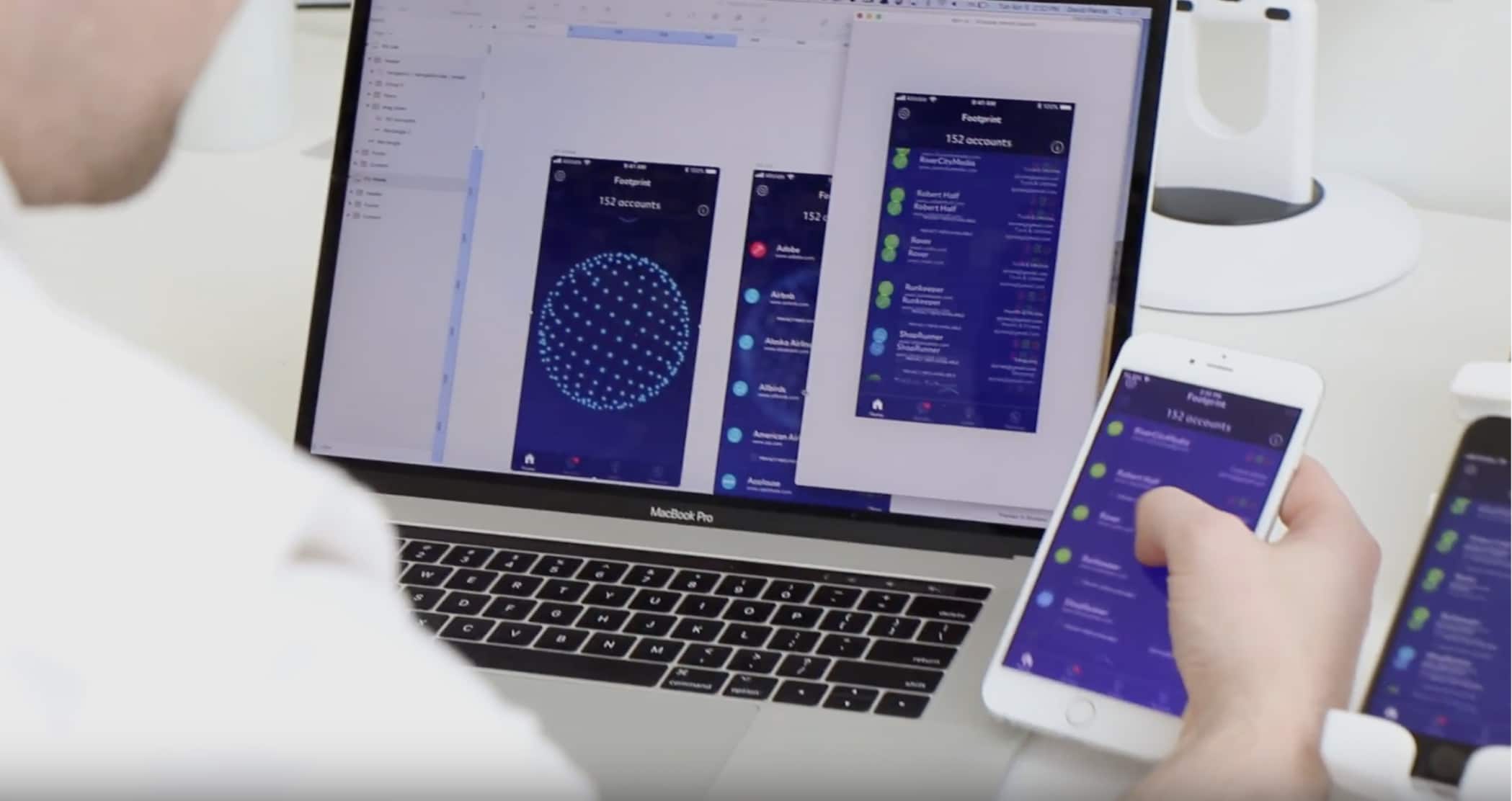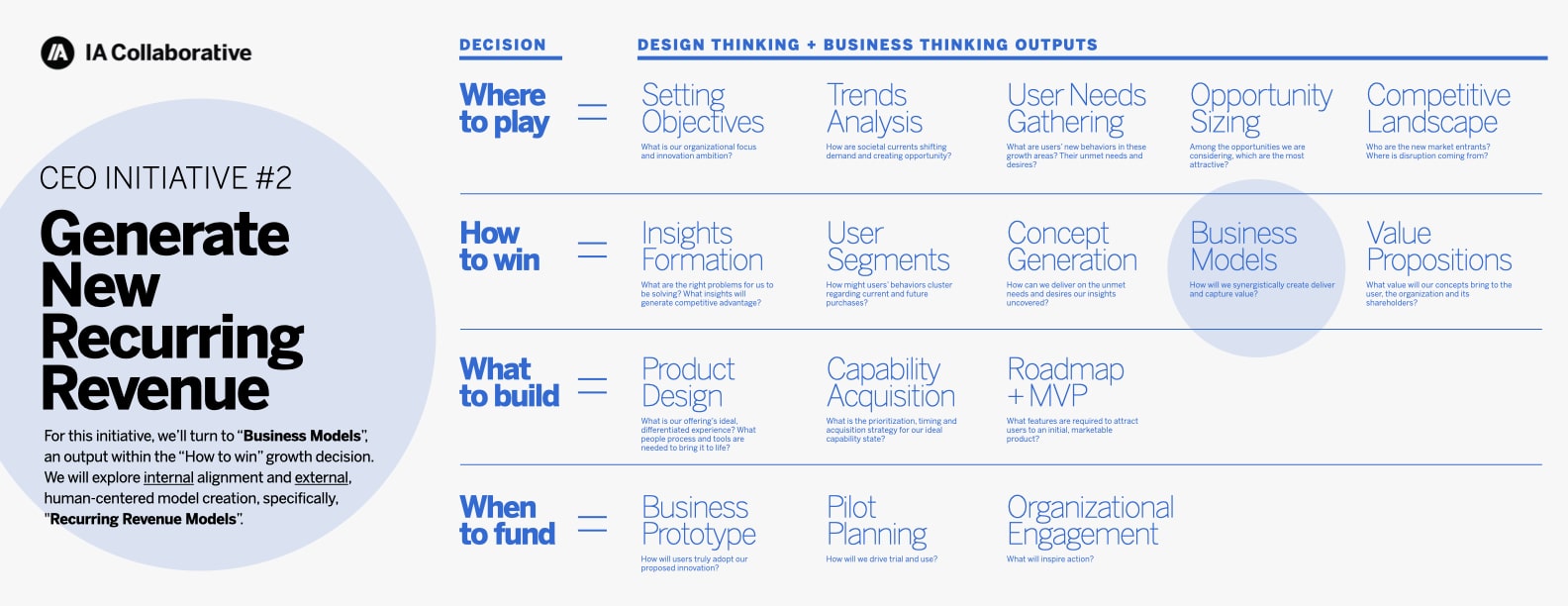Insights
Initiative 2/3: Generate new recurring revenue through subscribed services.

Today, even non-digital-native companies are creating new Software as a Service (SaaS) offerings, to capture recurring revenue and drive consistent growth.
As digital transformation shifts from an option to an imperative, more CEOs and other innovation leaders find themselves looking for silver linings. Because digital transformation isn’t just a necessity to enable current operations; it’s also an opportunity to create, deliver and capture entirely new value.
That’s why more organizations, when faced with decisions about which process and technologies to invest in, are choosing to create new software as a service (SaaS) offerings. SaaS products are a key growth opportunity—even for companies that haven’t traditionally delivered them—and offer a clear value add for customers as well as new recurring revenue streams.
Recurring Revenue Strategies
Recurring revenue is perhaps the number one driver of company stability and valuation, and it can be achieved through several different strategies. Here are four of the most common:
01 / Long-term contracts, such as leases or insurance policies. These take into account customers’ mental and emotional trade-offs of commitment versus flexibility.
02 / Closed-loop systems set switching costs and sunk costs just high enough to retain customers’ business. Closed-loop systems are created through complimentary consumables (e.g. razor + razor blade), hardware plus software combinations (e.g. iPhone + App store), and exclusive partnerships or affiliations.
03 / Loyalty communities, such as those fostered by Nike or Disney, design for social, emotional, and cultural brand affiliations. While devoted fan bases are not obligated to repeatedly purchase, the customer retention rates in these communities can often exceed those of contracted or closed-loop arrangements.
04 / Subscriptions are the baseline SaaS archetype. Regardless of pricing model (per use, number of seats, feature tiers, etc.) or auto-renewal clauses, SaaS offerings must continually deliver value worthy of customers’ periodic payments.
Consider four archetypal strategies to capture recurring value:

<em>All four of these strategies support a human-centered SaaS offering primed for recurring revenue. As such, all four will play into this key CEO initiative for 2023.</em>
Human-Centered Design: The Pathway to Saas Success
It’s important to consider a mix of the above strategies, but before deciding which revenue models will work best, the first step is to create a differentiated product that people will love.
A human-centered design approach to SaaS product creation starts with observing users’ shifting attitudes, emerging needs and trial behaviors, as well as the changing systems around them. Within these evolving currents, you can find patterns of unmet need, and from there, opportunities to create unique (SaaS) products that elegantly address those needs.
“Start by observing societal currents. What shifting attitudes, needs, behaviors, and systems expose new SaaS opportunities?”
— Dan Kraemer, IA Collaborative Co-Founder + Co-CEO
New SaaS For AllState: Expanding the Business of Protection

Say you’ve established yourself as a “home and auto” insurance company. You excel in your legacy offerings, but you’re also seeking new, related areas for growth — in particular, software as a service (SaaS) offerings with recurring revenue potential. If you start by looking for unmet needs among your current customers, and overlay the four recurring revenue strategies above, new and profitable SaaS opportunities invariably emerge.
The Strategy:
For Allstate, this process of need-spotting and revenue strategy led to a clear opportunity: Allstate Identity Protection, a subscription-based SaaS offering. By designing iteratively based on user insights, Allstate was able to create a digital product and protection service that discovers and visualizes each user’s “digital footprint”, enabling them to protect and take control of their digital lives. The human-centered platform employs a customer acquisition strategy that taps into all four recurring revenue archetypes.
The Process:
A beloved SaaS product responds to unmet needs, and which are identified through observation. Allstate observed shifting societal currents around asset protection: as more people share their data online, digital assets become as important—and potentially vulnerable—as traditional assets like homes and vehicles. With each phone number, credit card, or personal detail they share, users become more exposed to identity theft. While GDPR legislation has bolstered consumer protections, options for protecting digital assets are often confusing. Consumers now claim more awareness and choice about their online info, but must navigate the threat of exposure.
Enter Allstate. Building on an established reputation for trustworthiness and reliability, Allstate is well-positioned to put customers in control of their own data. Their next question, then, is what SaaS offering could deliver that kind of control—what product experiences and features might invite users into the driver’s seat of their digital lives?
These questions are best answered through user research.

The Insight: Fear paralyzes; curiosity drives engagement.
Research showed most users to be paralyzed by the prospect of managing their digital identities, and largely in the dark about what online accounts they’d amassed over the years.
This insight informed the creation of Allstate Identity Protection, a product designed to spark curiosity and drive engagement in the scary world of cyber threats and unknown vulnerabilities. A key feature within the Identity Protection suite is the “digital footprint”, a patented visualization that turns each customer’s entire history of online accounts into one manageable, interactive infographic. This served as the foundation for a suite of features including credit, financial, identity, credit card and social media monitoring, and even stolen funds reimbursement.

If you’re interested in these topics, we’d like to
The Future:
By starting with their customers’ most important unmet needs, Allstate had designed a product that people were embracing — in the notoriously low-engagement space of cybersecurity. To acquire and retain customers, Allstate will pursue a multi-dimensional strategy that taps into all four recurring revenue models.
01 / Long-term contracts: Allstate Identity Protection is included as a coverage option within the contract-based Allstate Benefits business.
02 / Loyal fan bases: Current customers who already trust Allstate with their data are much more likely to relinquish access to their personal emails, bank accounts and dark web data — all necessary for monitoring personal identity. Cross-selling to this loyal fanbase provides Allstate with a unique path to new recurring SaaS revenue.
03 / Closed-loop systems: Allstate Identity Protection is offered as an additional benefit when purchasing an extended warranty from an electronics retailer such as Best Buy’s extended warranty, taking advantage of a partner’s existing hardware + service closed-loop system.
04 / Subscriptions: Offering “essential” vs “premier” memberships, and individual vs family memberships are examples of tiered/feature-based and seat-based SaaS subscriptions.
The Takeaways
Digital transformation is driving new SaaS offerings. Ask yourself: “What new-to-the-company, value-added services might we enable as a result of our digital transformation choices?”
Examine changing societal currents to identify unmet customer needs. Use these to inform the design of a differentiated SaaS product that people love.
Consider four recurring revenue models, and use them to drive strategies for acquiring new customers, and retaining them into the future.
How to Build Recurring Revenue Models
At this stage, you’re here in the innovation process:

To form new, valuable recurring revenue models:
01 / Identify + prioritize users’ most important unmet needs. Document changing customer needs and expectations that align with your organization’s passions, unique potential, and top economic drivers. This will expose opportunities for new offerings.
02 / Consider four primary recurring revenue strategies. Once your team has aligned on a product that will uniquely deliver upon customers’ needs, consider how you might employ a mix of strategies to capture recurring value.
The result will be a human-centered offering that not only generates recurring revenue, but also strengthens the company’s core and overall competitive position.
READ ON FOR
Email Signup
News and Perspectives
"*" indicates required fields
